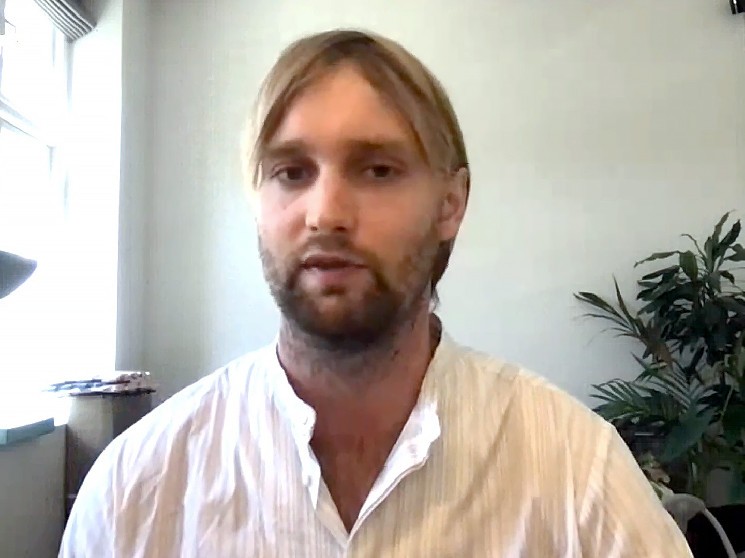A16z Doesn’t Support Plan to Break Up DeFi Giant MakerDAO

Venture capital giant Andreessen Horowitz (a16z) is not on board with the founder’s vision to break up MakerDAO, one of crypto’s largest decentralized finance protocols, into smaller units.
A16z, an investor in Maker with power to sway votes in decision-making, layed out its own vision for the protocol’s path forward, pushing back against some arguments of MakerDAO founder Rune Christensen’s “Endgame” manifesto on how to make Maker more decentralized and censorship-resistant.
Maker is a cornerstone of decentralized finance, where users withdraw and lend crypto in an automated manner. It also issues DAI, the $6-billion decentralized stablecoin, backed by some $7.8 billion in assets locked up by investors.
As a decentralized autonomous organization (DAO), the platform is governed by blockchain-based codes and votes by maker (MKR) token holders, who discuss all proposals and decisions in the protocol’s forum. A16z owns a significant amount of MKR tokens as an investor and therefore boasts voting power and influence on which proposals will eventually gain approval.
Ongoing Debate
The platform is in the middle of a makeover, and the debate between proponents of prioritizing decentralization versus boosting growth touches on a fundamental dilemma for cryptocurrency protocols.
«Currently, MakerDAO is wrestling with the trade-offs between growing the protocol or hardening it against regulatory risks,” Dustin Teander, an analyst at crypto intelligence platform Messari, told CoinDesk. “Decentralization has to play a part of course, but a small, decentralized product doesn’t actually solve the market problem for the people that need it.
The note, authored by Porter Smith, a partner at a16z, advocates for changes that would improve decentralization without impeding growth and comply with the current legal and regulatory environment. This includes improving the current system based on Core Units, instead of breaking up the protocol’s governance structure into smaller units called MetaDAOs.
“The Core Unit structure is arguably already legally decentralized,” Smith wrote. “Introducing MetaDAOs likely does not change this analysis, nor lead to more organizational resiliency from a strictly legal perspective.”
The note said a16z would support “experimentation through smaller, self-contained proposals to get a baseline for how proposed changes might work (or not) in practice.”
“Maybe experimenting with one MetaDAO (or one per type), iterating, and then rolling out an organizational change with real data and live experience could strike the balance here,” Smith wrote in a comment on the forum.
Two proposals are open for voting to MKR holders about how to reorganize MakerDAO’s structure, including spinning off management units of the protocol and turning them into MetaDAOs. At press time, polls show that around 90% of voters support the creation of MetaDAOs at the expense of Core Units.
Rune Christensen unveiled an ambitious roadmap for MakerDAO’s future in May, tagged as the Endgame plan, to make the protocol truly decentralized and resistant to any potential overreach and censorship from governments. His plan included free-floating DAI and ditching centralized assets from reserves which could be in theory blacklisted or seized.
In the short-term, however, MakerDAO contributors doubled down on growth and voted for incorporating real-world assets such as $500 million of government-issued treasury bonds into the protocol’s reserves, in an attempt to capture revenue from yields and build in incentives for MKR and DAI holders to attract new users.
Tensions between rival factions in the protocol’s governance go back at least to this summer, when investors and founders came face-to-face in a voting about the protocol’s lending oversight unit.







 Bitcoin
Bitcoin  Ethereum
Ethereum  Tether
Tether  USDC
USDC  Dogecoin
Dogecoin  Cardano
Cardano  TRON
TRON  Bitcoin Cash
Bitcoin Cash  Chainlink
Chainlink  Polygon
Polygon  Litecoin
Litecoin  LEO Token
LEO Token  Dai
Dai  Ethereum Classic
Ethereum Classic  Hedera
Hedera  Cronos
Cronos  Stacks
Stacks  Cosmos Hub
Cosmos Hub  Stellar
Stellar  OKB
OKB  Maker
Maker  Monero
Monero  Theta Network
Theta Network  Algorand
Algorand  NEO
NEO  Gate
Gate  KuCoin
KuCoin  Tezos
Tezos  EOS
EOS  Synthetix Network
Synthetix Network  IOTA
IOTA  Bitcoin Gold
Bitcoin Gold  Tether Gold
Tether Gold  TrueUSD
TrueUSD  Enjin Coin
Enjin Coin  Zilliqa
Zilliqa  Holo
Holo  Ravencoin
Ravencoin  0x Protocol
0x Protocol  Siacoin
Siacoin  Qtum
Qtum  Basic Attention
Basic Attention  Dash
Dash  Decred
Decred  NEM
NEM  Zcash
Zcash  Ontology
Ontology  Lisk
Lisk  Waves
Waves  DigiByte
DigiByte  Nano
Nano  Status
Status  Numeraire
Numeraire  Pax Dollar
Pax Dollar  Hive
Hive  Steem
Steem  Huobi
Huobi  OMG Network
OMG Network  BUSD
BUSD  Ren
Ren  Bitcoin Diamond
Bitcoin Diamond  Bytom
Bytom  Kyber Network Crystal Legacy
Kyber Network Crystal Legacy  HUSD
HUSD  Energi
Energi  Augur
Augur